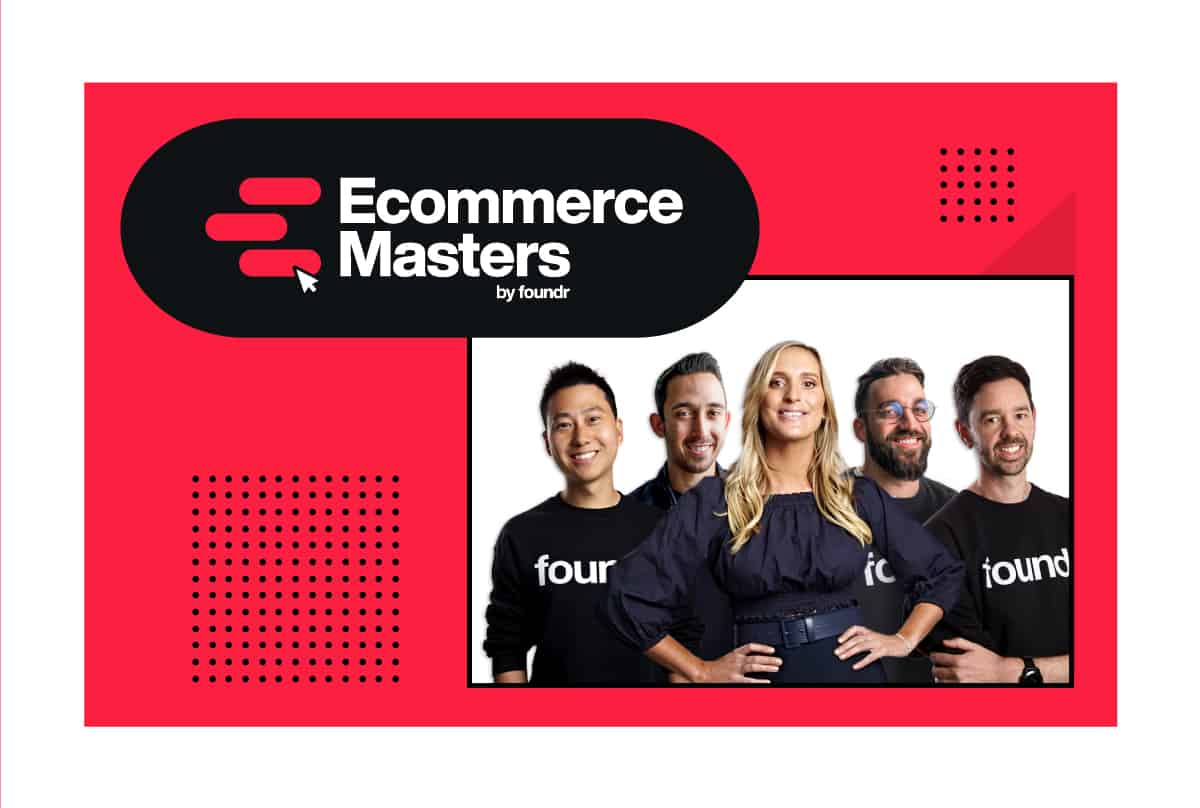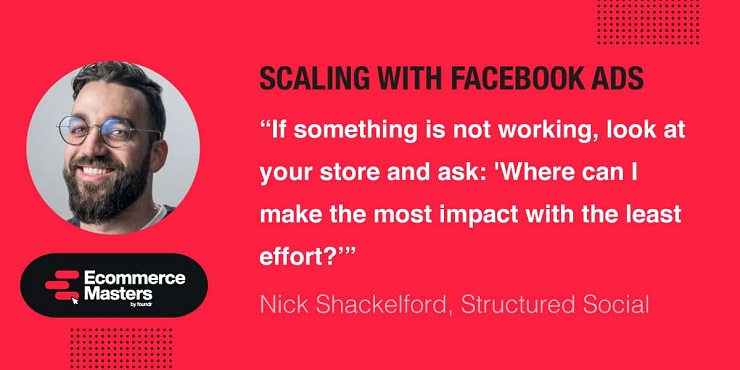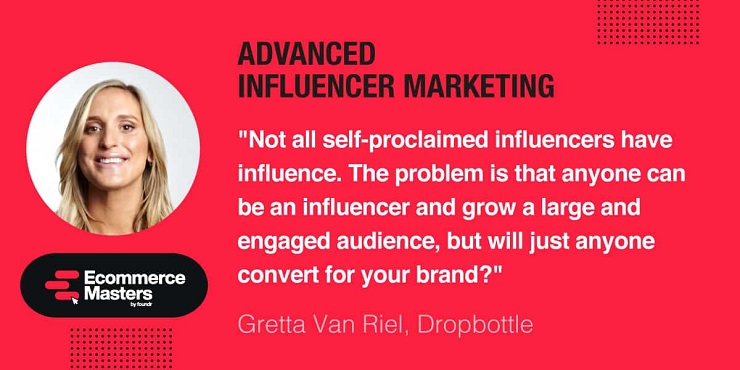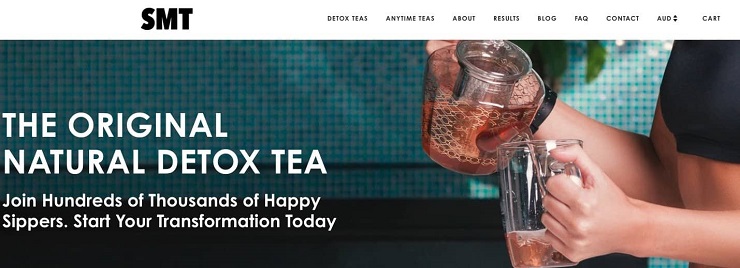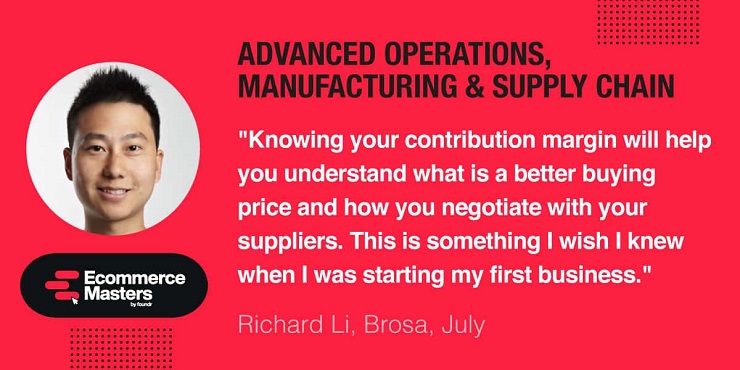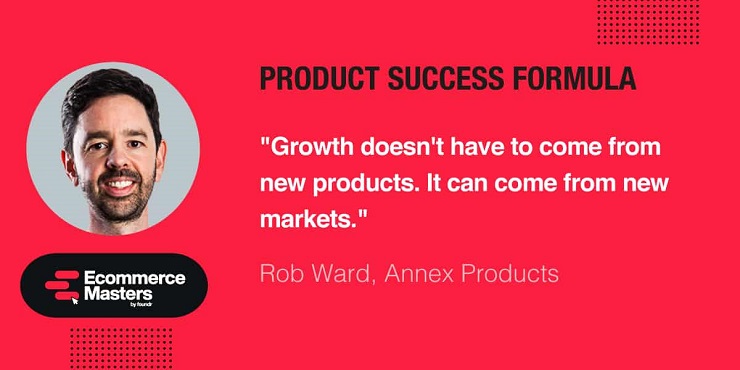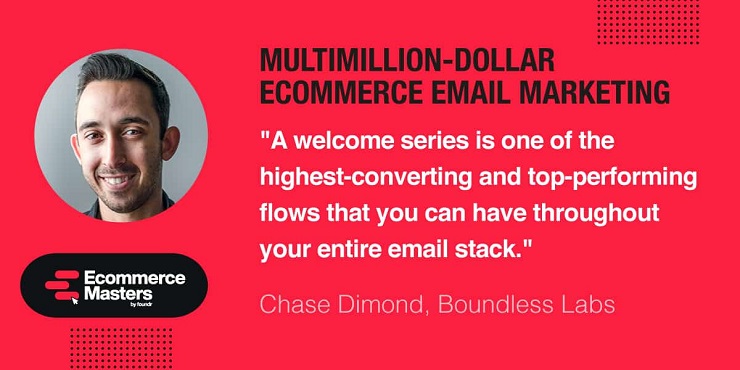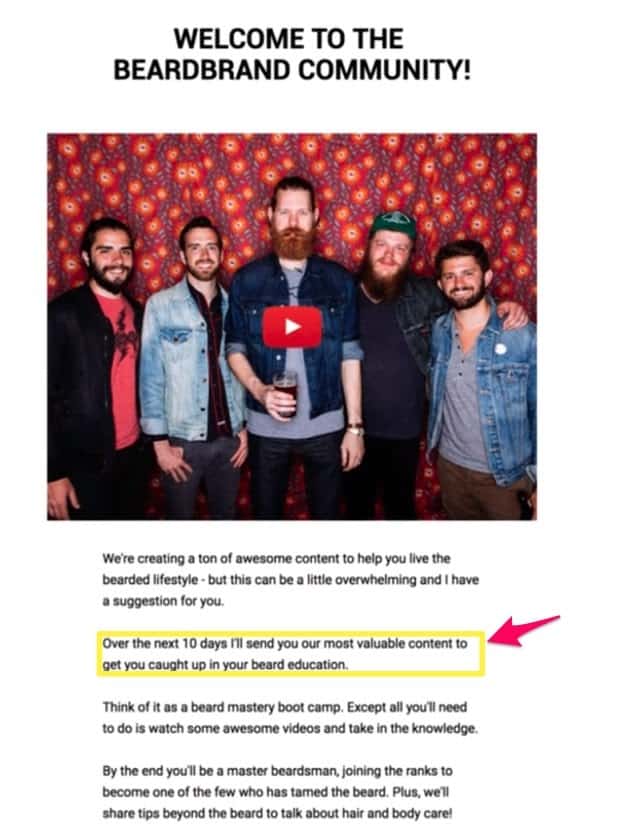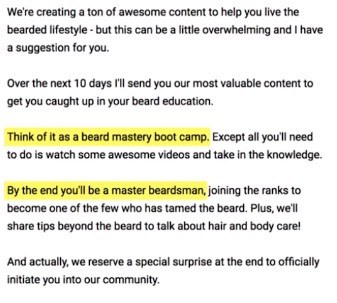As the old proverb goes, “What got you here won’t get you there.” It’s a reliable piece of wisdom when it comes to business growth, and it goes double for ecommerce.
Entrepreneurs selling products online almost universally will reach a certain point, and maybe you’re there yourself. Your initial efforts have paid off many times over, your fine-tuned store is now humming along, pulling down impressive sales while you sleep. It’s a damn good feeling, and yet…
You’re ready for more.
And you realize that, if you are going to take your business across the threshold and into a whole new level of success—we’re talking seven or eight figures in annual sales—you’re going to need a whole new arsenal.
This is something we’ve observed many times. One of our most popular courses, Start & Scale, is all about getting your ecommerce business to that first stage of legitimate success, and we’ve helped thousands of new entrepreneurs get there. But most of our students are always hungry for more, and looking to grow exponentially.
Knowing that the skills that helped you start and scale your business in the early days will likely not allow you to generate several million in annual sales, expand your product line, or expand into new, foreign markets, we decided to take things to the next level with our latest course.
We know that you need to learn about new, scalable marketing tactics, advanced operational and manufacturing ideas, and much more. So we gathered five of the leading experts in the world of ecommerce and asked them each to focus on one, critical aspect of advanced ecommerce that they have mastered themselves.
The result is what we call the “5 Core Driver Method” for scaling existing stores to the seven figures and beyond, and it’s the heart of our new Ecommerce Masters online course.
These five entrepreneurs together have been responsible for:
- Spending $85 million in Facebook ads
- Generating $1 million worth of sales in one day using influencers
- Generating $20 million from email marketing campaigns
- Selling 3 million units shipped to 100+ countries
- Winning 2 Shopify Build a Business awards
- Starting a $60 million dollar luggage startup
Today, we want to share with you a glimpse into the top skills these ecommerce masters have identified as absolutely crucial when it comes to entering the big leagues. Think of it as your roadmap to exponential growth.
Nick Shackelford, Structured Social
One of the most scalable marketing channels an ecommerce entrepreneur can invest in is Facebook’s advertising network. You can reach all of the 2.5 billion users from around the world at a relatively cheap price—but only if you know how to do it right.
There are so many different ways to approach Facebook advertising. Dive head first into a campaign, and you will quickly find yourself asking:
- Should I create separate campaigns to promote each product or promote them all within the same campaign?
- Should I bid automatically or manually?
- Should my goal be website conversions or website visits?
In practice, a Facebook advertising strategy will be different for pretty much any entrepreneur. Not to mention, Facebook constantly changes the algorithm, so success is a moving target. What’s an ecommerce advertiser to do? We know just the guy to ask.
Nick Shackelford is a repeat ecommerce founder and a Facebook ads expert, who has literally built a career around scaling Facebook ads for online stores, taking them to the six-, seven-, and even eight-figure range.
In his years of experience in the paid media space, he has spent upwards of $85 million in Facebook Ads, across multiple industries. What’s more, Nick has had a hand in over 150 direct-to-consumer brands to date.
Nick’s Advice
No matter how well your Facebook Ads campaigns work, you want to test new campaign structures, ad sets, and creatives to improve their performance and get the most out of your investment.
Every time you open your Facebook Ads campaign, you want to ask yourself, “What is the one thing that will drive the most impact with the least amount of effort?”
That is, how can you increase your performance while reducing your costs, all without putting too much time and effort into it?
There are three tests that Nick recommends, depending on your budget and the time of year. These tests will help you find what’s not working, change it, and improve your performance right away.
- First, you want to test new creatives, which includes testing a new angle, image, copy, or video. People get tired of seeing the same ads over and over, so if one ad doesn’t work, try a new creative.
- Then, you want to optimize your website, which includes improving your load time, your checkout structure, or your product copy. Sometimes, no matter how well your ads are structured, your website just doesn’t work properly. Test improvements and see if your results improve.
- Finally, you want to refresh your offer, which includes bundling different products into one, adding free extras, or positioning your product in a different way. People may not find your products that compelling initially, but if you slightly change your offer or positioning, you can spark new interest.
If possible, these three areas should be tested for improvement constantly, in rotation. So when one test type doesn’t work (e.g., testing new creatives), try another one (e.g., change your offer).
Gretta Van Riel, Dropbottle
In the past few years, influencer marketing has become one of the most effective tools in any online marketer’s arsenal. Ecommerce business owners of every size have been using it as one of their most profitable customer acquisition channels.
Mediakix’s 2019 Influencer Marketing Survey has confirmed this, reporting that 80% of marketers find influencer marketing effective. What’s more, 71% of marketers rate the quality of customers and traffic from influencer marketing as better than other marketing sources.
So how do you grow your business to new heights using influencer marketing?
To answer that question, we turned to our in house expert on the matter, Gretta van Riel.
Gretta started her first successful startup SkinnyMe Tea at the age of 22 with only $24 in the bank. She quickly realized the power of influencer marketing, which helped SkinnyMe Tea to grow exponentially. Her store would end up selling over 11 million cups of tea around the world. SkinnyMe Tea even won Shopify’s Build a Business competition.
Next, Gretta co-created The 5th Watches, which made $1 million in a single day of sales, followed by Dropbottle, Skintox Co., and an influencer marketing platform called Hey Influencers, which has helped link over 8,000 social media influencers to brands.
Gretta’s Advice
If you want to scale your influencer outreach, Gretta recommends the “blank account” technique. This method involves working only with nano- and micro-influencers—those who have fewer than 50,000 followers.
Working with these influencers, at scale, has two benefits:
- They cost less.
- They create a compound effect. That is, the more influencers you work with in any given niche, the more the people in this niche will be exposed to your brand, thus generating a higher likelihood of getting them to follow your brand, visit your store, and buy from you.
You want your brand to be seen everywhere, so you want to target influencers whose audiences overlap with one another.
To start using the blank account method, create a new blank Instagram account. The name and design of your new profile doesn’t matter, as you will be using it only to find and reach out to influencers.
Then, follow anywhere between 100 to 1,000 influencers in your niche. Make sure they don’t have more than 50,000 followers—ideally, Gretta recommends targeting those with 5,000 to 15,000 followers.
If you can’t find that many influencers in your niche, make sure to use the “Suggested” bar.
Once you’re done with that, hire a virtual assistant from Upwork or Online Jobs. This VA will help you reach out to each of the influencers on your list.
Your VAs should start from the first followed account and start sending direct messages to each influencer.
After they’ve sent each DM, have them like each of the influencer’s latest three posts and leave them a comment on the latest one with something like this:
We love your feed! We just sent you a message about joining team.
Remember to follow up if each influencer doesn’t respond.
Ultimately, you want to work with no more than 50 to 100 micro-influencers per month.
Richard Li, Brosa, July
Operations are often overlooked when you are first getting started. And it’s understandable. Compared to the other five topics explored here, this is the most complex of all.
Large ecommerce retailers like Amazon and Target hire experts who manage each and every step of the manufacturing and operational process. But you’re no Amazon or Target, so should you care as much about your operations?
Yes! That’s because they represent one of the biggest profit drainers and one of the few critical components that will contribute to your future success over the long term.
While this topic seems daunting, fear not, because it can be managed. To help you out with this, we got Richard Li.
Rich is the co-founder of luggage startup July, and BROSA, Australia’s top online furniture manufacturer.
Prior to BROSA and July, Rich built his expertise in business strategy, brand development, and ecommerce, as the largest seller to Groupon Group, globally.
Richard’s Advice
If you want to scale your manufacturing, there’s one key concept you need to understand: contribution margin. This refers to the net profit before paying your fixed costs, like your rent and utilities.
Why is this metric so important?
Because the contribution margin is what will help you understand your ideal price to pay your manufacturers.
Here’s the formula for this metric:
Contribution margin = Gross margin – Variable costs
Your gross margin is your net sales revenue minus the costs of your goods sold.
Your variable costs are all the expenses you incur to make a sale, which include:
- Your warehousing costs
- Your credit card fees
- The delivery costs
- The marketing costs
- The raw material cost
The contribution margin will help you decide:
- The amount of money you should be spending on marketing
- Whether you should increase your product price or not
- Whether the costs of manufacturing your products should be reduced or not
All ecommerce entrepreneurs should keep a tight grip on their costs by creating a sheet like this one:
In it, you will input all your key financial numbers (average order value, variable costs, etc.) so you will be able to find your contribution margin.
Rob Ward, Annex Products
You may have mastered the art and science of operations and marketing, but if your products suck, your store won’t grow. That’s why you must also master the art of developing successful products that your customers will love to buy.
One of the leading experts on this topic is Rob Ward, the co-founder of Annex Products, the company behind the Opena Case and Quad Lock, an iPhone bike mount and accessory company.
Rob successfully bootstrapped Quad Lock from 0 to $9 million in four years and today has sold 3 million units to over 100 countries. His success with Quad Lock helped Rob become the Shopify Build a Business winner in 2011.
Rob’s Advice
Once you have found a product that’s working, one that people buy and recommend to their friends, you need to create more products so you can keep growing.
So how do you find your next big product?
A simple change to your first successful product won’t cut it. You need something new that will grow your brand. To help you out, implement the “Second Album Framework.”
This approach involves asking yourself four key questions:
- Have you mastered your existing product? Are you sure you can’t market it to new markets or change it somehow to improve your current sales?
- Will this new product be an “onboarding” product (focused on new markets or customers?) or a “complementary” product (introduced for use with your existing product?)
- Have you validated your market and product?
- Have you worked out the financial aspects of producing and marketing your new product?
With the answer to these four questions, you will have a much clearer idea of how your new product will fit into your existing line, how you will market it, and how it will affect your finances.
Chase Dimond, Boundless Labs
I’m sure you’re well aware of the importance of email marketing. Some 81% of small businesses still rely on email as their primary customer acquisition channel, and 80% use it for retention. It just works.
As your store grows in size and complexity, your email marketing campaigns will grow as well. At first, you can make do with a few simple automated campaigns. But these campaigns won’t cut it if you want to break into the six- or seven-figure realm.
That’s where Chase Dimond comes in.
Chase is a partner at Boundless Labs, an ecommerce email marketing agency serving large clients like The Chive, IBEX, Original Grain, TUSHY, and Vinyl Me Please. He’s been behind campaigns that resulted in over $20 million in email attributable revenue.
Chase’s Advice
One of the most important email campaigns an ecommerce entrepreneur can use to build interest, loyalty, and generate sales is the welcome series.
Welcome series have an average conversion rate of 3%. While the main goal of this campaign is to educate and nurture your subscribers, not to generate a sale, they help build trust in your brand, paving the way for future sales.
One brand that runs a killer welcome series is Beardbrand. Their welcome email looks like this:
Not only does this email give a warm feeling to a new subscriber as it introduces them to the brand, it also sets expectations as to what the subscriber will get.
They mention “valuable content to get you caught up in your beard education.” Also, they note that the campaign will last 10 days. Given the number of brands who spam their subscribers to death, this helps the recipient know that they will get just a few emails in this time span. Ideally, your welcome series will consist of three to five emails distributed between a week and a half and two weeks.
If your store has a strong brand voice, make it shine in your emails, so your subscribers get accustomed to it. It will help you stand out and connect with them down the line.
Again, the guys of Beardbrand do a great job with this:
Another key way to leverage your welcome series is using social proof. Share testimonials, rewards, awards won, press features, and influential partnerships.
Remember, the goal of a welcome series is to generate trust, not to make a sale right away. Use them as a way to engage with your subscribers so by the time the welcome series is finished, they will be ready to buy from you.
5 Keys to Becoming an Advanced Ecommerce Entrepreneur
The advice shared by these five entrepreneurs represents just a small piece of what they have to offer. But we hope these initial insights will give you a better idea of what the next level of ecommerce looks like, and begin to set you on the right path.
If this seems like a path you’re ready to head down as you take your ecommerce business to the next level, we’d encourage you to check out Ecommerce Masters. These five rising stars have shared so much more with us in the full course, and we’re incredibly grateful to have them all on board.
If you are interested in learning more about how to take your store to new heights, check out Ecommerce Masters today.
